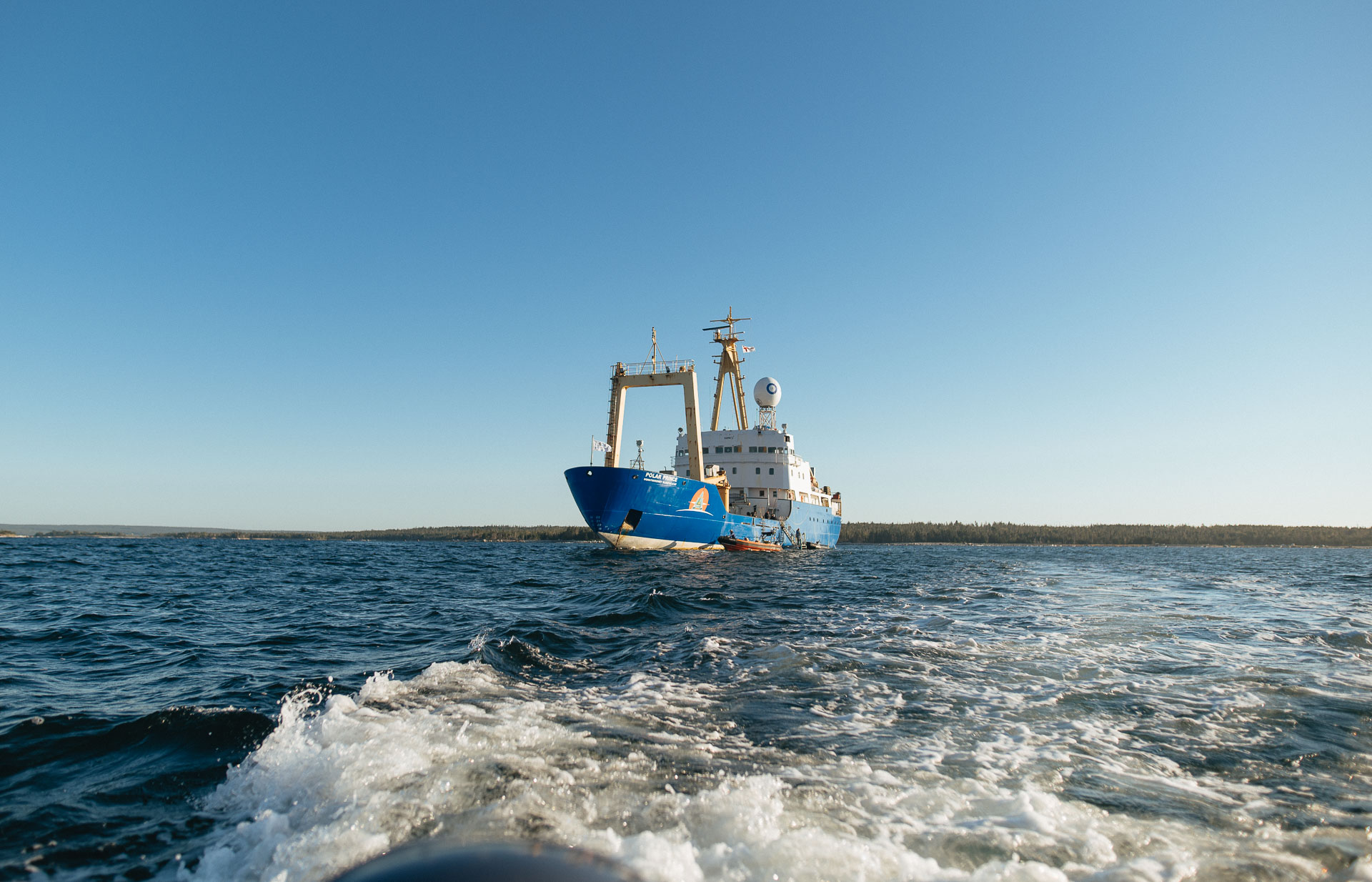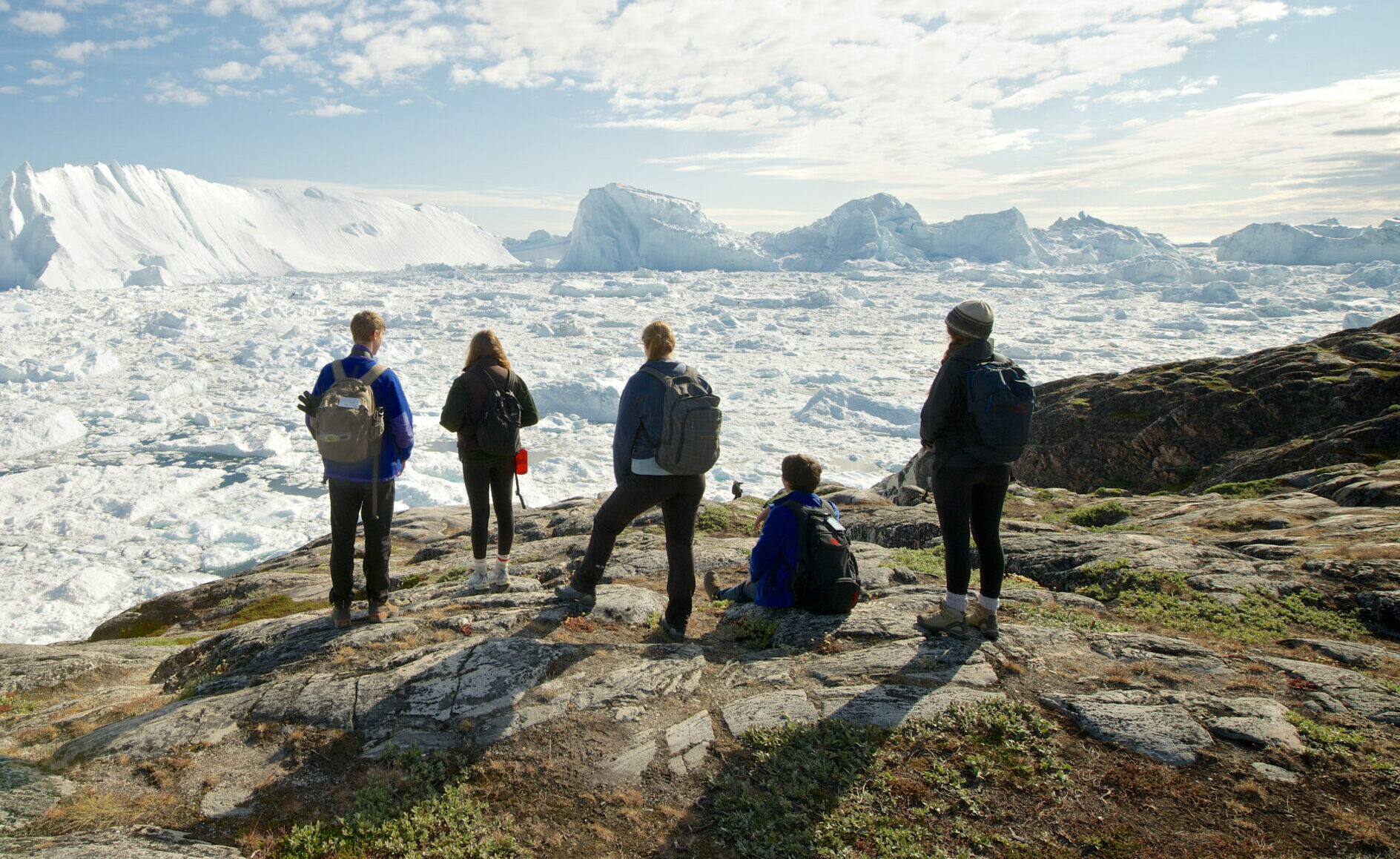The Innu Nation Uinipekᵁ Ocean Expedition: Leg 3 Update
Leg 3 of the Innu Nation Uinipeku Ocean Expedition has been non-stop action, with many incredible experiences in the Natuashish Marine Zone, and much knowledge gathered and shared about the Innu Nation coastal and marine environments. Another group of Innu youth from both Sheshatshiu and Natuashish have joined this leg and have been jumping into all of the hands-on opportunities in science, mariner skills, storytelling, and more. We’ve been busy out on the sea and on the land every daylight hour with a diverse mix of shore time, ship time, and science time.
This team of youth have called themselves Uapashkuet, meaning polar bears. This is because we have had plenty of polar bear sightings. It’s been wonderful to see bears out amongst some of the rocky outer islands. Did you know that polar bears are marine mammals? Their main habitat is sea ice and ocean, and they can swim for many hours non-stop, and regularly travel distances of around 50 kms at a time! Their fur, which is hollow, not only insulates them well (in addition to their fat reserves), it helps them float. Team Uapashkuet have lived up to their name as they have also spent some time in the water as well. We had a special swim call from the ship and almost our entire team jumped into the near-freezing ocean for a quick, refreshing dip! I think they would have all appreciated some of that polar bear fur. Brrrrr.

The expedition also welcomed a number of Innu Guardians from both Sheshatshiu and Natuashish, including Gerry Pasteen, Sebastian Piwas, Joachim Nui Jr., Ian Rich, George Tshakapesh, and Etienne Pone. Sebastian and Etienne have both been guardians for over 30 years! Other community members who have joined include Mark Nui, who has held a number of leadership positions within the Innu Nation, including as a former Grand Chief, and David Nui who is a lands claim negotiator. It is a great opportunity for the youth to learn from Guardians and leaders about the importance of the Innu connection to their lands and waters, and how that relates to their collective futures as Innu.
Many of the research projects we are conducting are through the Department of Fisheries and Oceans (DFO). One project is using baited cameras to characterize marine species that prey upon organisms living on or near the seafloor. They are equipped with lights, cameras, and bait – in this case, juicy cat food! DFO researcher Jessica Desforges has been working closely with the youth as they have been setting up the cameras and choosing the locations. During this leg they have been deployed in depths ranging from 5 to 60 meters and have recorded footage of rock cod, toad crab, urchins, sea stars, sculpins, and even lumpfish.

Another DFO project is collecting Environmental DNA (eDNA) which is a tool used to characterize marine biodiversity. Jessica gave a great explanation of this to everyone, comparing it to a crime scene investigation where DNA is extracted from a toothbrush or hair strand to generate a list of suspects. eDNA is similar in that water can be collected and filtered to yield a list of taxa from little critters like zooplankton to larger organisms like whales! The youth gloved up and did some of this filtering with samples from the deep water on the edge of the Natuashish Marine Zone.

Finally, we released more drifters to study Ocean currents. There is great interest in the data that the drifters will collect from the Innu community members and participants; they are often on the waters and islands in this area practicing Innu aitun (Innu practices), which includes gathering, fishing and hunting. On a local level, this data will help inform how these practices can continue to be done safely despite the changing climate and ocean conditions. On a broader scale, it will help researchers to track any changes to ocean currents, in particular the Labrador Current.
As with the second leg of the expedition, the drifters were given names by the Innu participants. Three of the drifters received special names honouring loved ones that have passed on; one for Mark’s late children, Journey and Courage, one for Lennox’s late grandmother Martha, and one for a young woman from Sheshatshiu who very recently passed away named Martina. The other drifters received the following names: Utshekataku (star), Kapapamankut (drifter in the water), Uastekapun (northern lights).

We still have a few days to go in the Natuashish Marine Zone, including its many beautiful islands, bays, and channels, along with a day and a half of open sea time as we sail back down to Goose Bay. That means a whole bunch more to come – stay tuned!





